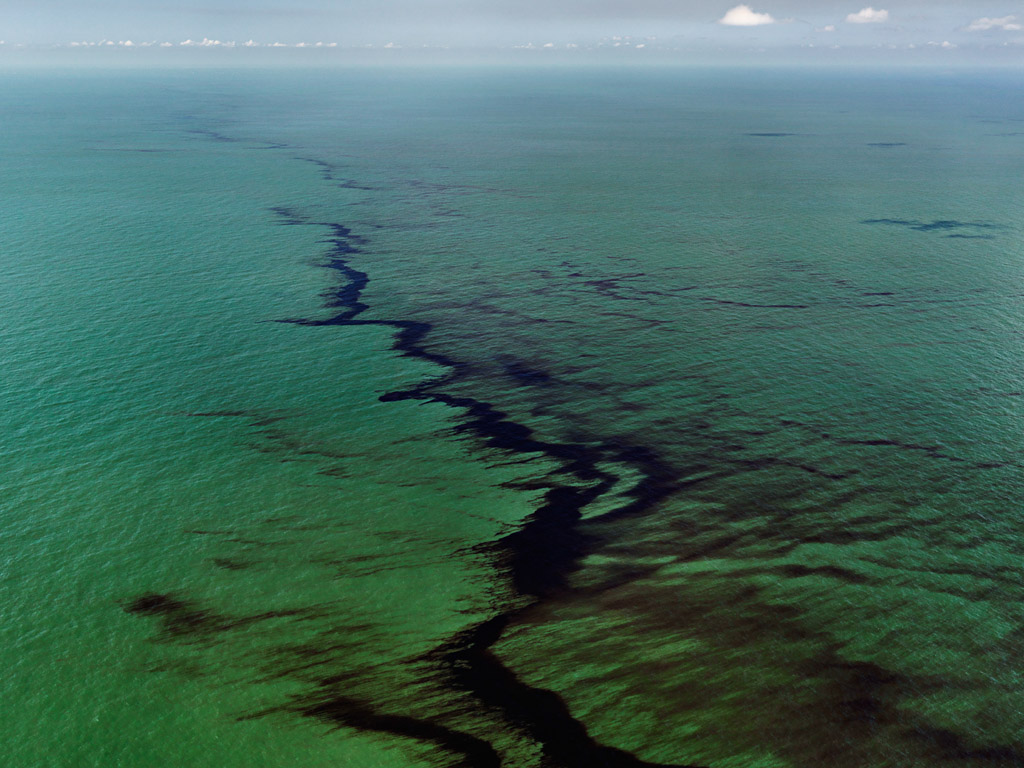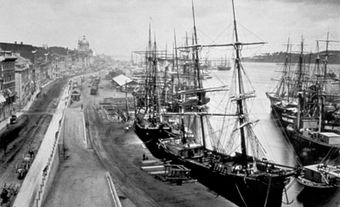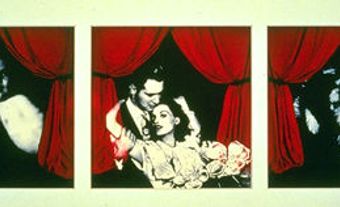
Education and Early Career
Burtynsky began taking photographs at an early age. When he was 11, his father, a Ukrainian immigrant who worked on the production line at the local General Motors plant, purchased a darkroom and cameras from a widow whose husband had been an amateur photographer. At that time Burtynsky learned not only the art of photography but the art of black and white printing. By 1974, he was taking night classes in graphic design at Niagara College in Welland, Ontario. He went on to attend Ryerson Polytechnical Institute (now Ryerson University), where he received a Bachelor of Applied Arts in Photography in 1982.
Influenced by American photographers Ansel Adams, Edward Weston, and Carleton Watkins, Burtynsky’s early work largely consists of colour photographs of landscapes, usually from relatively close up and with a focus on sensuous detail. In Landscape Study #1, North Carolina, USA (1979), for instance, the camera hovers close to the ground, directed at a tangle of brush and bushes and twigs at the entrance to a wood, everything inflected with autumn yellow and gold. Similarly, Landscape Study #2, Ontario, Canada (1981) is an image of cattails and birch sapling rising out of shallow water.
In 1985, Burtynsky founded Toronto Image Works, a darkroom rental facility, custom photo laboratory, digital imaging and new media training centre. Toronto Image Works also houses Burtynsky’s studio.

Breakthrough
With the Breaking Ground: Mines, Railcuts and Homesteads series (1983–85) and then Vermont Quarries (1991–92), Burtynsky decisively moved away from the relatively conventional, lyrical landscape work of his earlier period, to more expansive pictures of the impact human beings, especially in the modern, industrial era, have made on landscapes. Mines #13, Inco-Abandoned Mine Shaft, Crean Hill Mine, Sudbury, Ontario, Canada (1984) is a slightly elevated image of the blasted rock wall of the mine, the bottom of the shaft filled with green water. Mines #19, Westar Open Pit Coal Mine, Sparwood, British Columbia, Canada (1985) is a broader image of the way open-pit mining literally pillages the landscape. Rock of Ages #7, Active Section, E.L. Smith Quarry, Barre, Vermont, USA (1991), on the other hand, has a monumental beauty, the great blocks of white marble rising up from the depths.
Mature Style
Burtynsky’s mature style is characterized by a sublime sense of the scale of his subject matter and a sophisticated, and often vibrant, use of color. Nickel Tailings #31, Sudbury, Ontario (1996), from the Tailings series, is an aerial view of a toxic, almost phosphorescent orange stream of nickel tailings leaking down a denuded, dark grey hillside. Shipbreaking #27, Chittagong, Bangladesh (2000), from the Shipbreaking series, shows massive, rusted fragments of ships that have been disassembled for their iron stranded out on a flat, muddy flood plain, the workers dwarfed by the giant structures. In the panoramic Dam #2, Three Gorges Dam Project, Yangtze River, China (2002), the still unfinished dam rises up in the middle distance at sunset, the river placid, the light a soft pink — an almost pastoral loveliness in the midst of devastation. The vast expanses of rubble in the diptych Feng Jie #3 & 4, Three Gorges Dam Project, Yangtze River, China (2002) suggests the real human impact of the mega-dam — whole villages razed, their residents forcibly relocated, to make way for the rising water.
Manufactured Landscapes
Burtynsky’s work reached a wider audience with the success of Jennifer Baichwal’s Genie Award-winning documentary feature, Manufactured Landscapes (2006). Gorgeously shot by acclaimed filmmaker Peter Mettler, the film focuses on Burtynsky’s images of distressed landscapes and industrial ruin (taken from a book of the same name published in 2003) whether it be the bright rivers of nickel tailings or the impact of the Three Gorges Dam project or the vast factories and shipyards of China. The film also highlights Burtynsky as an accomplished and knowledgeable speaker on the ways in which industry and consumerism have transformed the face of the earth.

Recent Projects
Burtynsky’s two most recent projects are Oil and Water, both of which resulted in books. Alberta Oil Sands #10, Fort McMurray, Alberta, Canada (2007), for instance, is a gloomy, aerial, twilight view of dark, oily tailings ponds spreading out over a nearly lunar landscape, a few remaining scraggly trees in the distance. SOCAR Oil Fields #9, Baku, Azerbaijan (2006) shows the crumbling ruins of an abandoned oil field. In Oil Spill #10, Oil Slick at Rip Tide, Gulf of Mexico, June 24 (2010), black oil from the 2010 Gulf oil spill forms a long, jagged, bleeding river through green water. Shot from a helicopter, like many of the images in both Oil and Water, Colorado River Delta #2, Near San Felipe, Baja, Mexico (2011) shows the eerie, root-like branching of what remains of the depleted Colorado River spreading over an expanse of dried mud and salt. For the first time in 30 years, Burtynsky also included as part of Water images of the pristine wilderness that is often the ultimate source of fresh water. Mount Edziza Provincial Park #1, Northern British Columbia, Canada (2012), for instance, is an image of a soaring mountain range streaked with snow and glaciers.
In addition to the photographs included in Water, Burtynsky has also ventured into filmmaking, co-directing, with Jennifer Baichwal, Watermark, a feature-length documentary about the meaning and use of water. The film premiered at the Toronto International Film Festival in September, 2013.
Honours and Awards
Photographic Book Award, Applied Arts Magazine (2003)
Rolof Beny Book Award (2003)
Academician’s Honours, Royal Canadian Academy of Arts (2003)
The Rencontres d’Arles Outreach Award, Arles, France (2004)
TED Prize, TED (2005)
Officer, Order of Canada (2006)
Honorary Doctor of Fine Arts in Photography Study, Ryerson University (2007)
Honorary Doctor of Laws, Queen’s University (2007)
ICP Infinity Award (Art Category), International Centre of Photography (2008)
Kraszna-Krausz Book Award (Burtynsky: Oil) (2010)
Gold Prize: Conceptual Photography, National Magazine Awards (Canada) (2011)
MOCCA Award (2011)
Honorary Doctor of Laws, Mount Allison University (2011)
Honorary Doctor of Letters, University of British Columbia (2013)
Honorary Degree, University of Toronto (2017)

 Share on Facebook
Share on Facebook Share on X
Share on X Share by Email
Share by Email Share on Google Classroom
Share on Google Classroom








